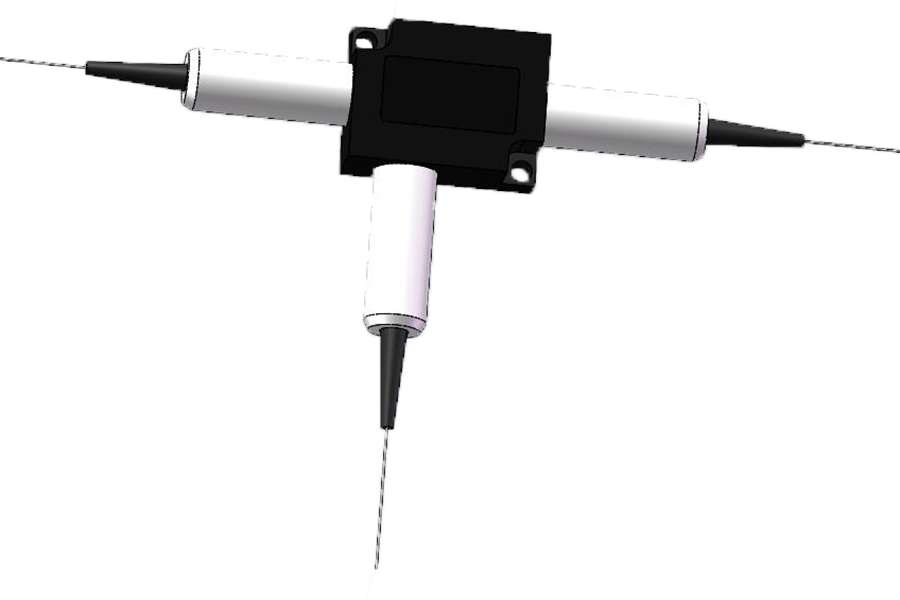Erbium-doped fiber amplifiers (EDFAs) are special types of optical amplifiers meant to provide discreet amplification. Discreet amplifiers are often used as boosters, pre-amplifiers, or in-line amplifiers. Sometimes, they are also used to compensate for the loss of additional elements such as DCM, which is often located between the fiber spans.
How is a typical EDFA constructed?
An EDFA is composed of optical passive components, erbium-doped fiber, and pump lasers. The reason why passive components are used is that they meet optical and environmental specifications. While erbium-doped fiber is chosen depending on the optical power, gain, and noise figure requirements, pump lasers make a significant impact on the price and performance of optical amplifiers.
This amplifier module is usually connected to the transmission fiber with the help of fiber connectors. These connectors come with higher insertion loss and reflectivity when compared to fusion splicing but are easy to install in the network.
Hence, in high-quality EDFA modules, internal optical components are fusion spliced together to ensure the low loss, low back reflection, high strength, and highly reliable joins. Fusion splicing is customized based on particular fiber types. Thus, optical components with dissimilar fiber types are joined with the lowest loss.
The signal and pump radiation are coupled with the low loss by using certain optical components called wavelength division multiplexers (WDM) – which are based on fused fiber or interference technology. Fused-fiber WDMs offer the lowest insertion loss but are restricted to only widely spaced wavelengths, such as 980 nm pump and 1530 nm signal.
However, interference filter-based WDMs can be used for closely spaced wavelengths, such as 1480 nm pump and 1530 nm signal. Plus, they also have very low wavelength-dependent insertion loss.
Due to signal reflections, an amplifier can act as a laser and this effect can be eliminated in EDFAs by using optical isolators, which is why most EDFAs contain optical isolators. However, some EDFAs contain optical circulators instead of optical isolators.
What Is the Use of Optical Circulators in EDFAs?
OTDR has recently become a revolutionary technique to locate breaks and measure return/transmission losses along optical-fiber networks. However, traditional EDFAs cannot be used in optical time-domain reflectometry (OTDR) because traditional EDFAs contain optical isolators. Therefore, new EDFAs have been developed and introduced that used optical circulators and return transmission lines. The new EDFAs now support both OTDR and digital signal transmission.
Optical circulators are widely being used for testing and measurement, optical fiber amplifiers, as well as pump laser sources. This means optical circulators are playing a vital role in the production of advanced EDFAs in many ways.
Optical circulators are typically three-port devices where the incoming optical signals pass through port 1 called the input port and enter port 2 called the output port, while the light entering port 2 due to reflection is directed to port 3. Thus, optical circulators help separate co-propagating and counter-propagating traffic on a single transmission fiber before amplification is done.
Optical circulators are available in two types: polarization-maintaining (PM) optical circulators and polarization-insensitive optical circulators.
In applications, where you need to work with random polarization states, you need to use polarization-insensitive optical circulators. However, in applications that require a specific polarization state, you need to employ polarization-maintaining optical circulators.
If you are looking for any optical passive components, including polarization-maintaining optical circulators and polarization-insensitive optical circulators, please get in touch with DK Photonics.


Leave A Comment